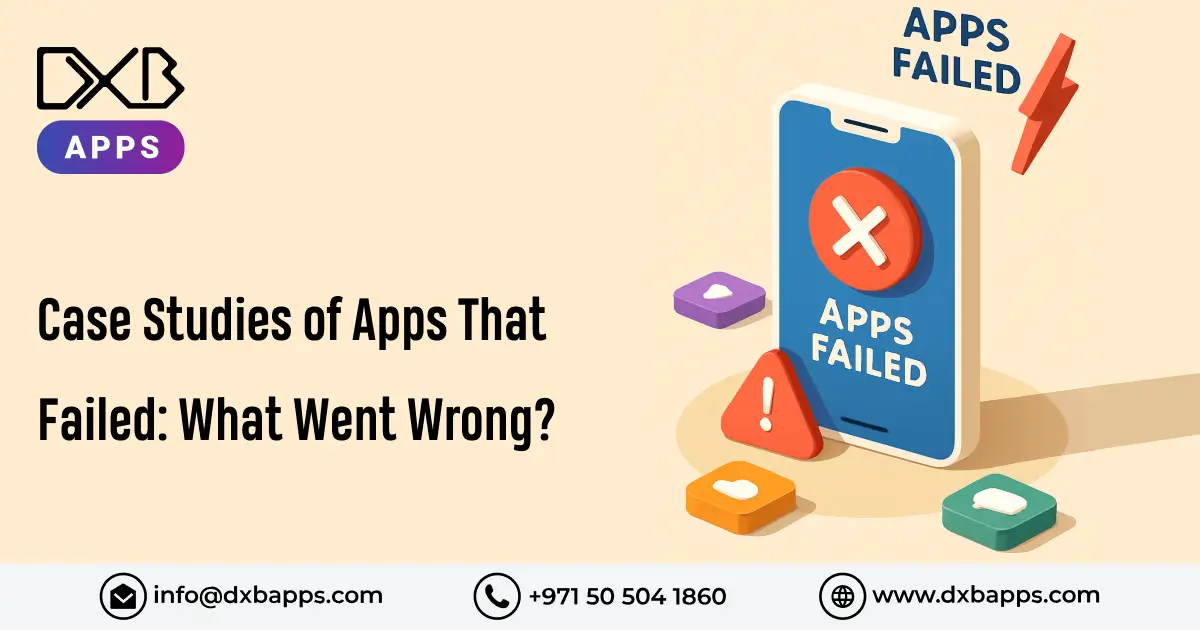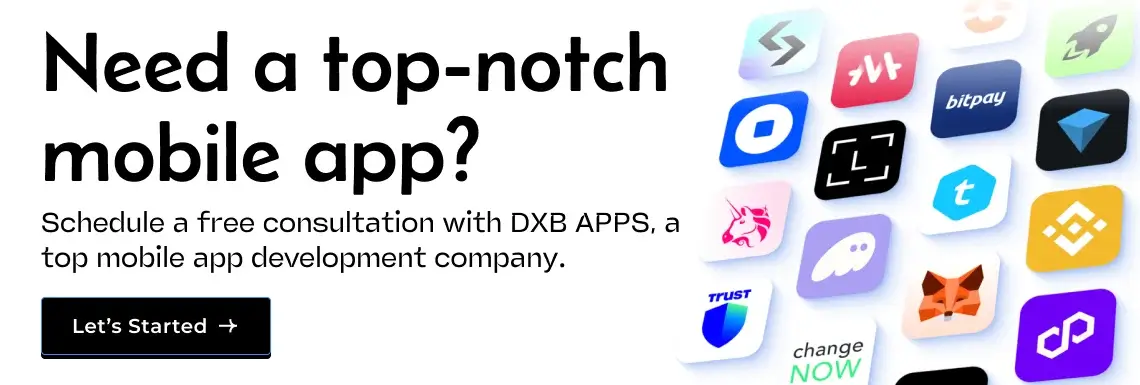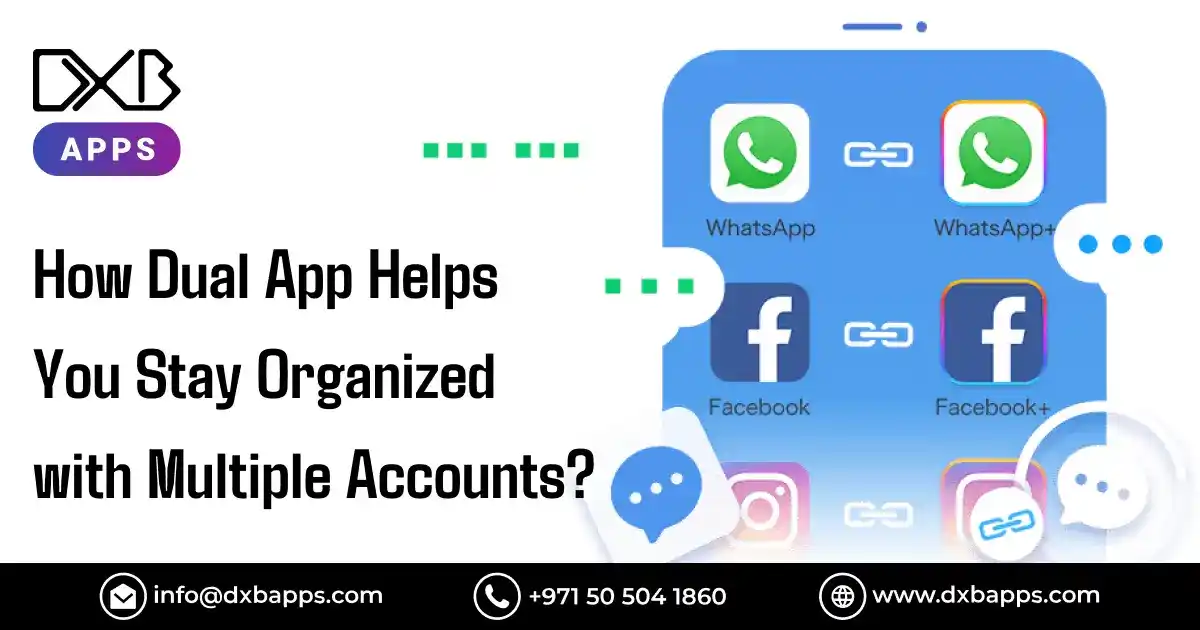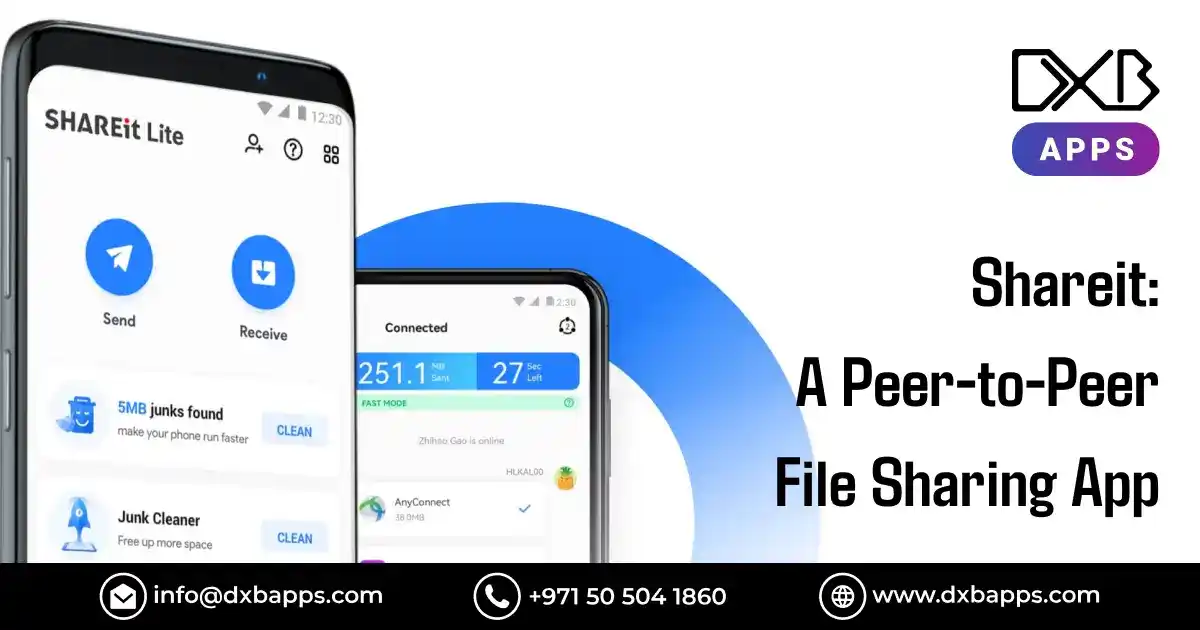The app market has seen thousands of apps shine and go away within a few days. Effective learning from unsuccessful apps is important for app developers, entrepreneurs, and companies that want to venture into the mobile space. These setbacks are mostly due to avoidable mistakes that would have been avoided if they had readied themselves well and carried out their ideas better.
Learning from mistakes in others is probably the best way to create successful apps. Analyzing real-world app failures examples teaches us about the trends and warning signs behind disappointment and revenue loss in the mobile app space.
More than 90% of mobile applications fail in the long term in the market
A typical app loses 77% of its active users within three days because it's just been installed
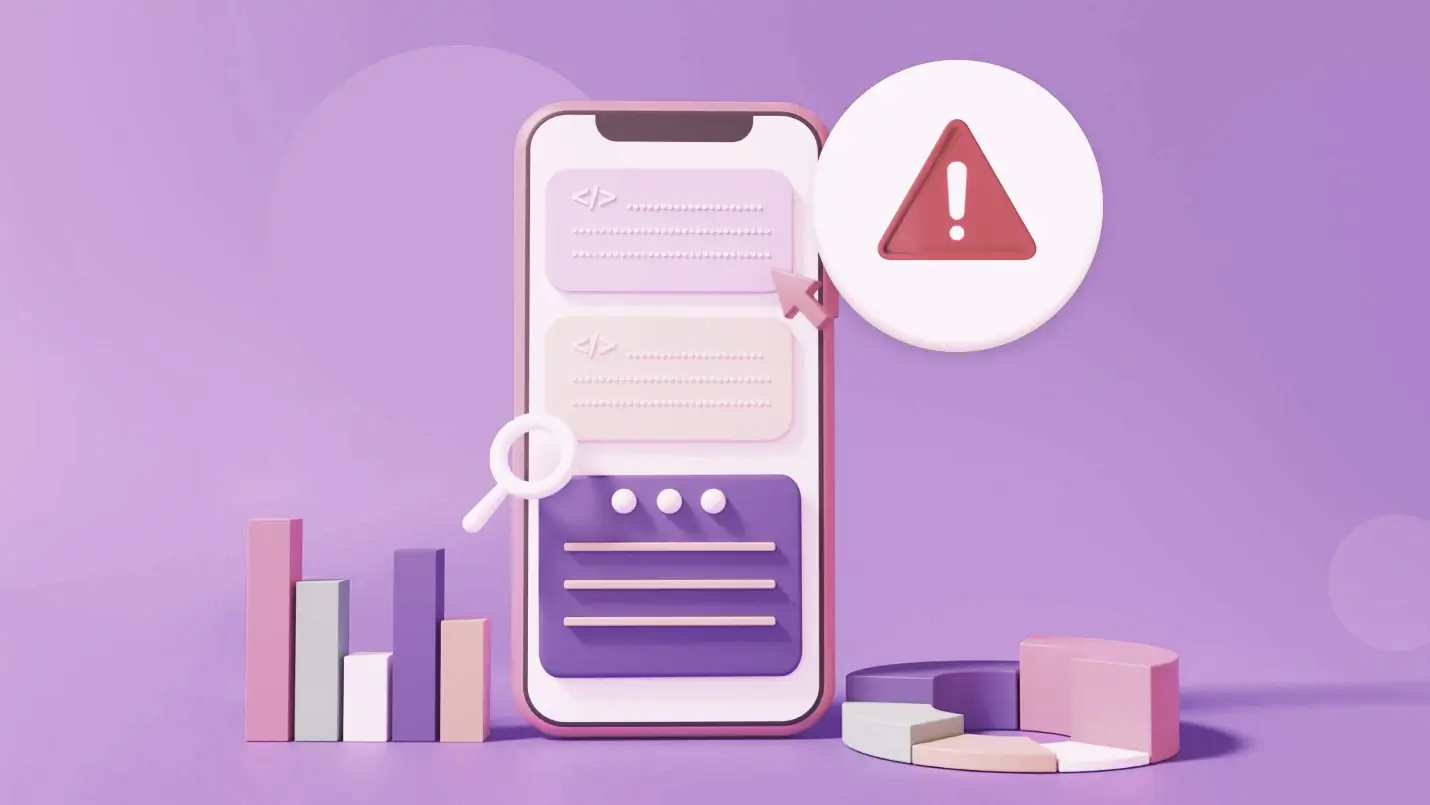
Massive App Failure Case Studies
Google Plus: The Social Media Giant That Never Was
Google Plus is perhaps the finest example of how apps fail despite enormous resources and support. Google launched Google Plus in 2011 as its competitor to Facebook, and the site had everything in its favor - unlimited budgets, integration with other Google services, and a strong promotion drive.
The major failure points were:
- Late entry into a saturated marketplace
- Compulsory bundling with other Google services
- Too complex of an interface that baffled users
- Failure to offer a unique value proposition
Google Plus was officially discontinued in 2019 after several years of declining usage, demonstrating that even technology giants could create mobile app failures when they fail to listen to the demand of their users and the timing of the market.
Vine: Short-Form Video Innovator That Lost Its Way
Vine was the trailblazer of the short-form video strategy that eventually caught up with TikTok in popularity. With millions of active users and a new content category created, Vine is a classic failed apps case study of terrible monetization and strategic missteps.
Why apps fail is evident in Vine's case:
- No monetization channels for creators
- Competition from Instagram and Snapchat
- Failure to innovate on features
- Bad creator retention strategies
Twitter shut down Vine in 2017, demonstrating how app retention problems can destroy even solid concepts with good user bases.
Windows Phone: The OS That Failed
Microsoft's Windows Phone is an in-depth app failures examples case where multiple factors coalesced to achieve complete market failure. Windows Phone never achieved significant market share despite massive investment and marketing.
Major failure drivers were:
- Premature market entry into established markets
- Restricted app universe relative to iOS and Android
- Low developer adoption rates
- Unstable hardware partnerships
Quibi: Pay-for-View Cell Phone Content Nobody Was Asking For
Quibi invested $1.75 billion in developing pay-for-view short-form premium content for cell phones. The site is the costliest study of failed apps in recent years, shutting down just six months after it opened.
It didn't work because:
- Product-market fit failure in the COVID-19 pandemic
- Too costly subscription model
- Content that did not connect with target markets
- Technological limitations that hampered sharing capabilities
Google Glass: Pre-Mature Wearable Tech
Google Glass was meant to revolutionize wearable tech but was a case of launching the product before its time. The product and the app that went with it did not work despite massive technological advancements and hype.
Key reasons apps fail:
- Clumsy user experience due to technological constraints
- Insane price that made it unaffordable
- Consumer and business privacy concerns
- Restricted real-world usage scenarios for consumers
Just 0.5% of mobile applications make substantial amounts of money for developers
Common Patterns of App Failure Development
Failure to Conduct Adequate Market Research
Most of the causes of app failure are as a result of inadequate market research and user testing. Developers will tend to create products based on individual assumptions and not real market needs and consumer interests.
Areas of prime investigation are:
- Discovery of target audience
- Examination of competitive forces
- Patterns in user behavior
- Market size and opportunity for growth
Technical Implementation Issues
Poor technical implementation brings along many app development pitfalls that can ruin user experience and app performance. They are only discovered upon launch when their solution becomes costly and time-consuming.
Prevalent technical flaws:
- Slow loading and poor performance
- Notable frequent crashing and bugs
- Poor user experience in navigation and design
- Insufficient security controls
Monetization Strategy Failures
App monetization mistakes indicate a major failure class that hits even very popular applications with millions of customers. Developers tend to get users because they ignore sustainable revenue sources.
Monetization issues are:
- Inadequate pricing strategies
- Dependence on ad revenue
- Insufficient premium feature differentiation
- Poor implementation of the subscription model
25% of apps are launched and subsequently uninstalled by users
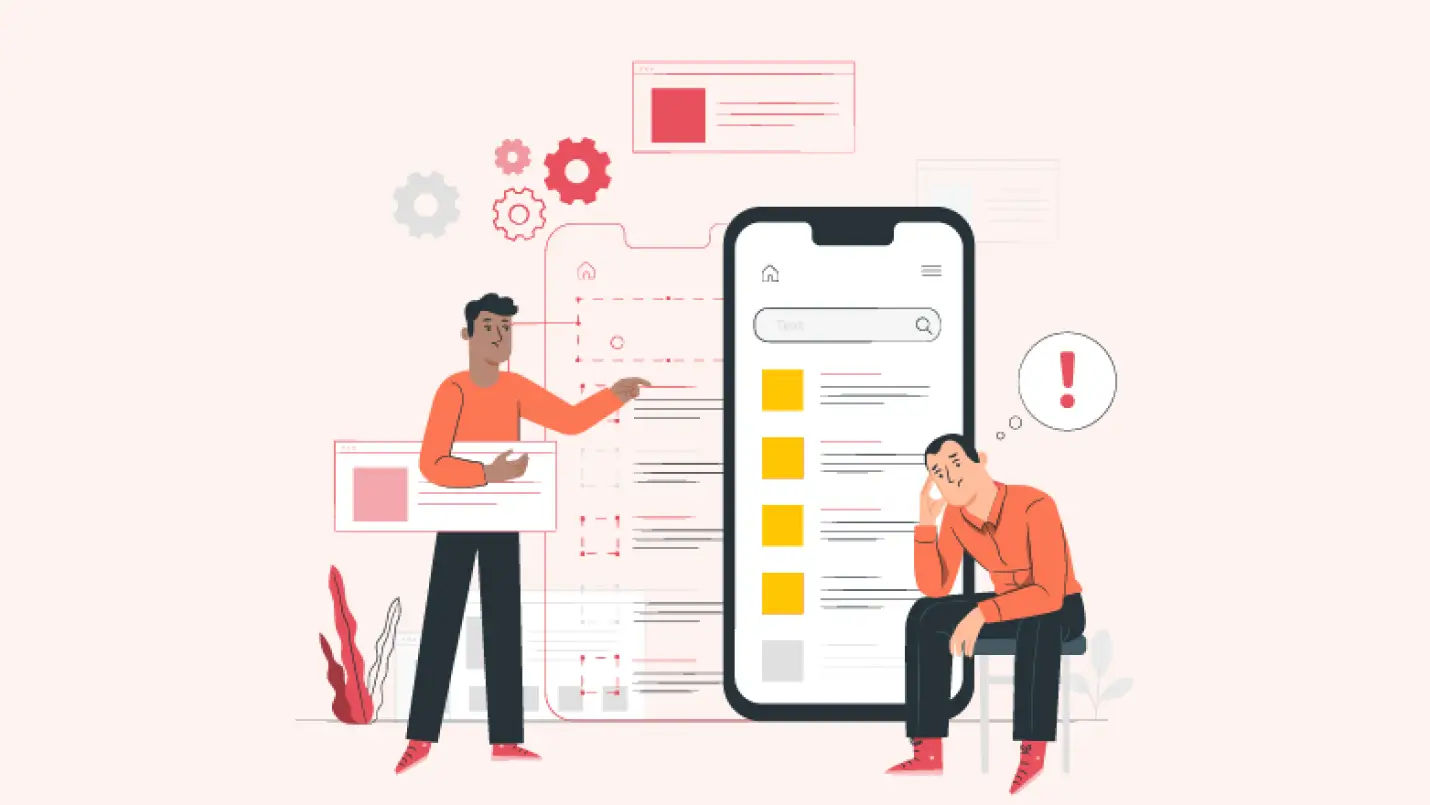
User Experience Design Flaws
Interface Complexity Problems
Most apps don't work because they cause bad user experience with overly complicated navigation models and interfaces. People want straightforward design that enables them to accomplish things right away and quickly.
Design failure symptoms:
- Too many steps for simple tasks
- Poorly defined navigation models
- Confused design elements
- Insufficient user guidance
Onboarding Process Issues
The first user experience normally preconditions the success or failure of the apps. Unnecessarily complicated onboarding disenfranchises the user, causing high abandonment rates and app retention issues on the first day.
Successful onboarding involves:
- Elegant registration processes
- Clear communication of value proposition
- Rolling out features smoothly
- Minimum commitment requests at early stages
Market Timing and Competitive Analysis
Risks of Premature Market Entry
Late entry into markets is as worse as premature entry. Product-market fit failure most often occurs when apps enter the market before individuals are ready to adopt new habits or technology.
Timing factors include:
- Readiness of technology infrastructure
- Patterns of user behavior and adoption rates
- Stability of regulatory environment
- The state of the economy in terms of expenditure affecting it
Competitive Positioning Blunders
Knowledge of competitive environment prevents the mobile app failures due to failed positioning and differentiation strategies. Most apps fail due to poor definition of their value proposition.
Competitive analysis should include:
- Direct and indirect competitors
- Market positioning strategies
- Monetization and pricing strategies
- User acquisition and user retention strategies
Financial Planning and Resource Management
Funding and Budget Allocation
Financial planning shortcomings are responsible for the majority of app failures examples whereby innovative apps consume resources without achieving sustainability. Adequate budgeting provides sufficient funding for development, advertising, and continued upkeep.
Budgetary problems are:
- Development and testing expenses
- Advertizing and user retention
- Continued upkeep and revisions
- Customer support infrastructure
Revenue Model Sustainability
Sustainable revenue model design avoids app monetization mistakes that kill otherwise great apps. Revenue planning has to happen at the conceptual stage, not afterwards after launch.
Revenue model opportunities:
- Subscription-based services
- In-app purchase strategies
- Advertising and sponsorship-based revenue
- Premium feature revenue
Technology Stack and Performance Issues
Planning for Scalability
The majority of apps fail when they are unable to scale effectively. App development pitfalls most commonly involve poor infrastructure design that constrains scalability and performance under heavier user loads.
Scalability requirements:
- Server infrastructure ability
- Database tuning
- Content delivery network
- Load balancing and failover system
Platform Compatibility
Cross-platform compatibility issues cause retention issues with apps when customers are given varying degrees of performance based on diverse devices and operating systems.
Compatibility factors:
- iOS and Android optimization
- Device-specific performance tuning
- Operating system update compatibility
- Screen size and resolution adjustment
"The graveyard of dead apps is full of good ideas poorly executed, mistimed, or that didn't address real user issues."
Learning from Failure: Prevention Strategies
Comprehensive Testing Protocols
Proper testing avoids most of the technical failures for which apps fail in competitive environments. Testing should extend beyond functionality, performance, user experience, and security parameters upon launch.
Types of testing are:
- Functional testing for feature validation
- Performance testing under different scenarios
- User experience testing with target segments
- Security testing to prevent loss of data
Continuous User Feedback Integration
Popular applications continually gather and act on user feedback to prevent user experience mistakes that cause app abandonment and negative ratings.
How feedback is obtained:
- In-app feedback mechanisms
- User survey and interviews
- Review analysis of the app store
- Usage analytics and behavior monitoring
Recovery and Pivot Strategies
Pivot vs. Persist Timing
Knowing when to pivot or hang in saves cold, hard failure in difficult circumstances. Certain apps are able to recover from initial failures through strategic pivots and feature refinements.
Decision-making criteria are:
- Market feedback and validation
- Technical feasibility of improvements
Successful Recovery Examples
Certain apps have recovered well from nearly-failure scenarios through strategic adjustments and improvement. Such recovery examples provide good lessons to suffering apps.
Recovery strategies typically entail:
- Rethinking the whole user experience
- Business model changes
- Target customer redefined
- Simplification of feature set
Case Studies of Failed Apps: Key Takeaways
The case studies of failed apps reveal consistent patterns that developers must recognize and avoid. All of the failure stories can be a useful source of information about the factors that distinguish between successful apps and those that vanish in app stores soon.
Learning these trends assists developers to make sound decisions regarding the initial features that will be developed, the right time to enter the market, and the resources to be allocated. The most successful apps take lessons out of these failures and deploy strategies that correct the underlying problems that usually cause app abandonment and market failure.
How DXB APPS Builds Top-Notch and Successful Applications?
DXB APPS is a top mobile app development company that knows what causes apps to succeed and fail. Our custom app development process is designed to avoid common pitfalls for app failures through effective planning and execution strategies.
Our app development Dubai team carries out thorough market research, user testing, and competitive analysis prior to undertaking any development process. We realize that great apps are more than great code - they need strategic heads, user-focused design, and sound business models that guarantee long-term success in competitive markets.
Conclusion
Learning from failed apps and patterns of failure is crucial for every new player in the mobile app business. The lessons from the examples show that success takes more than having good ideas - it takes good execution, good timing in the market, focus on users, and resilient business models. These failures inform developers and organizations about how to make intelligent choices to make them successful in developing applications that meet real user needs and make it sustainable to monetize.
FAQs
Q: What is the number one failure in mobile apps in the market?
A. Inability to obtain product-market fit, in which apps address the problems that users might not be having or might not need to be having.
Q: How do developers prevent bad user experience problems leading to app failure?
A. Perform extensive user testing, design easy-to-use interfaces, and get ongoing feedback during development.
Q: What percentage of mobile apps actually bring meaningful revenue?
A. 0.5% of mobile apps produce tremendous revenues, thus the need for efficient planning and execution strategy.

